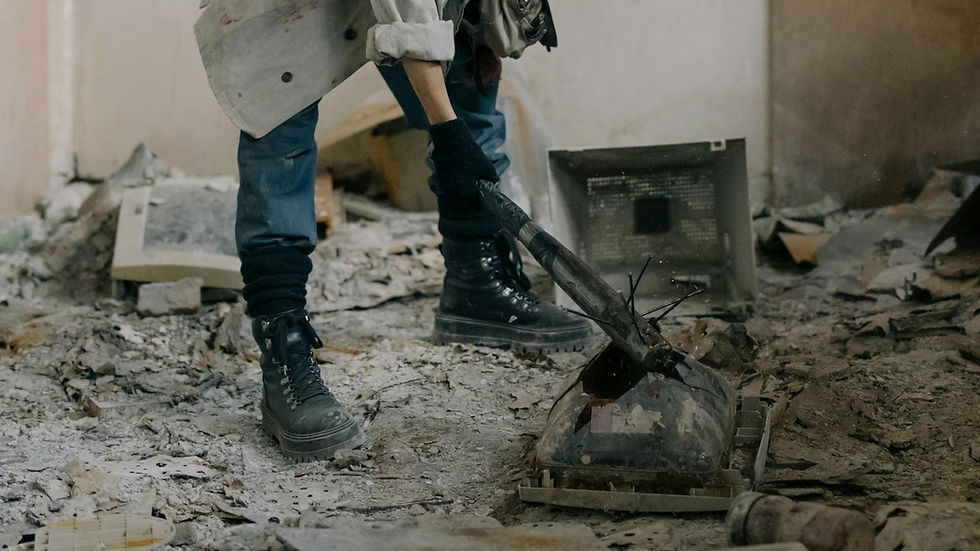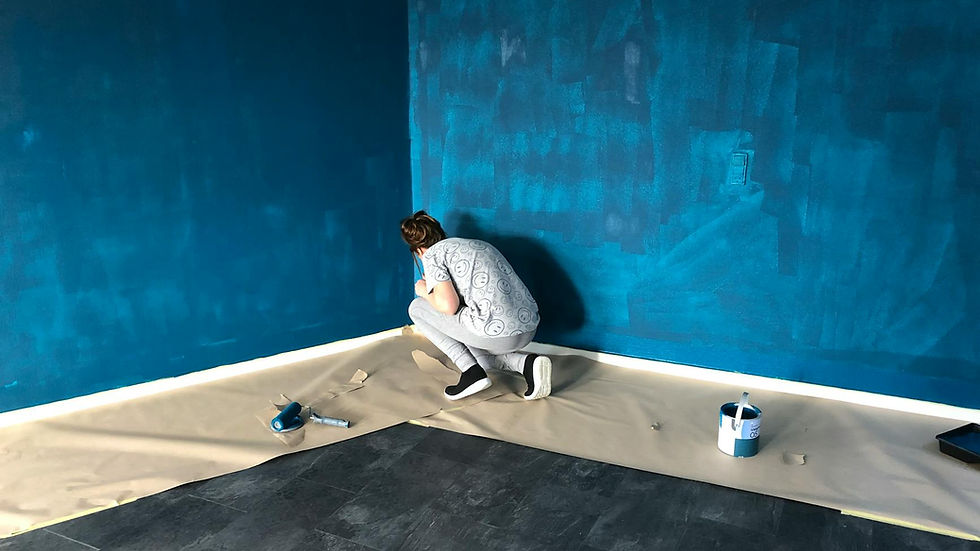Fix Falling Crawl Space Insulation: Pro Tips
- Riley Thorne

- 4 days ago
- 4 min read

Have you noticed a sudden chill in your floors? Or perhaps your energy bills have mysteriously spiked? The culprit could be lurking beneath your house – falling crawl space insulation. This often-overlooked issue can lead to significant energy loss, moisture problems, and even pest infestations. Luckily, fixing falling crawl space insulation doesn’t have to be a nightmare. This comprehensive guide provides pro tips and tricks you should know to keep your crawl space – and your home – in top shape. We'll cover everything from identifying the problem to implementing long-term solutions, empowering you to tackle this home maintenance challenge with confidence.
Identifying the Problem: Why Insulation Falls
Understanding why your crawl space insulation is falling is the first step in finding the right solution. Several factors can contribute to this common problem, and identifying the root cause is crucial for effective Fixing Falling Crawl Space Insulation.
Moisture, the Silent Destroyer
Moisture is the number one enemy of crawl space insulation. High humidity, leaky pipes, or even groundwater seepage can saturate the insulation, causing it to become heavy and detach from the subfloor. This damp environment also encourages mold growth, which further degrades the insulation and creates unhealthy living conditions.
Pest Infestations: Unwanted Guests
Rodents, insects, and other pests often find refuge in crawl spaces. They can nest in insulation, tear it apart for building materials, or simply damage it as they move around. Their activity can significantly weaken the insulation's structure, leading to its eventual collapse.
Improper Installation: A Common Oversight
Poor installation is another frequent cause of falling insulation. If the insulation wasn't properly secured in the first place, it's only a matter of time before gravity takes its toll. Using inadequate fasteners, spacing them too far apart, or failing to account for the insulation's weight can all contribute to this issue.
Age and Deterioration: The Inevitable Decline
Like any building material, insulation degrades over time. The binders that hold fiberglass insulation together can break down, causing the material to crumble and fall. Similarly, foam insulation can become brittle and crack, losing its effectiveness and structural integrity.
Fixing Falling Crawl Space Insulation: Step-by-Step Guide
Once you've identified the cause of your falling insulation, you can start implementing the appropriate solutions. Here are some pro tips and tricks you should know for Fixing Falling Crawl Space Insulation effectively.
Assessing the Damage: Before You Begin
Before you start any repairs, thoroughly inspect your crawl space. Note the extent of the damage, identify any moisture sources, and look for signs of pest activity. This assessment will help you determine the scope of the project and the materials you'll need.
Safety First: Protecting Yourself
Crawl spaces can be hazardous environments. Always wear protective gear, including a respirator, safety glasses, gloves, and a Tyvek suit. This will protect you from mold spores, fiberglass particles, and other potential irritants.
Removing Damaged Insulation: A Necessary Step
Carefully remove any insulation that has already fallen or is severely damaged. Dispose of it properly according to local regulations. Consider using a HEPA vacuum to remove any remaining debris or dust.
Addressing Moisture Issues: Eliminating the Source
Before reinstalling insulation, address any moisture problems in your crawl space. Repair leaky pipes, improve drainage, and consider installing a vapor barrier to prevent moisture from rising from the ground. A dehumidifier can also help maintain a dry environment.
Choosing the Right Insulation: Making the Best Choice
Select insulation that is appropriate for crawl space environments. Rigid foam board, spray foam, and fiberglass batts with a moisture-resistant facing are all good options. Consider the R-value (thermal resistance) of the insulation to ensure adequate energy efficiency.
Rigid Foam Board: Excellent moisture resistance and high R-value. Can be more expensive but offers long-term performance.
Spray Foam: Creates an airtight seal and fills gaps effectively. Requires professional installation.
Fiberglass Batts: A more affordable option, but requires careful installation to prevent moisture absorption. Use faced batts with the vapor retarder facing the living space.
Proper Installation Techniques: Ensuring Longevity
Install the new insulation according to the manufacturer's instructions and local building codes. Use appropriate fasteners, such as insulation supports or wire mesh, to securely hold the insulation in place. Overlap seams to prevent air gaps.
Insulation Supports: Metal or plastic supports that attach to the floor joists and hold the insulation in place.
Wire Mesh: A grid of wire that is stapled to the floor joists to support the insulation.
Construction Adhesive: Can be used in conjunction with fasteners to provide extra hold, especially for rigid foam board.
Sealing Air Leaks: Maximizing Energy Efficiency
Seal any air leaks in your crawl space to prevent drafts and further moisture problems. Use caulk or expanding foam to seal gaps around pipes, wires, and foundation walls.
Preventing Future Problems: Long-Term Solutions
To prevent future insulation problems, consider encapsulating your crawl space. This involves sealing the crawl space with a vapor barrier, insulating the walls, and installing a dehumidifier. Encapsulation creates a conditioned environment that is less susceptible to moisture and pest infestations.
Tips and Tricks You Should Know
Here are some additional tips and tricks you should know for Fixing Falling Crawl Space Insulation:
Regular Inspections: Inspect your crawl space regularly for signs of moisture, pests, or insulation damage.
Professional Help: If you're not comfortable working in a crawl space, or if you have extensive damage, consider hiring a professional insulation contractor.
Energy Audits: Conduct an energy audit to identify other areas of your home that may be contributing to energy loss.
Proper Ventilation: Ensure your crawl space has adequate ventilation to prevent moisture buildup (unless you are encapsulating the space).
Conclusion
Fixing falling crawl space insulation is a crucial step in maintaining a healthy, energy-efficient home. By identifying the cause of the problem, implementing the appropriate solutions, and following these pro tips and tricks, you can protect your crawl space from moisture, pests, and energy loss. Remember to prioritize safety, choose the right insulation materials, and ensure proper installation.
Don't let falling crawl space insulation compromise your comfort and energy bills. Take action today and reclaim your crawl space! If you're feeling overwhelmed, reach out to a qualified professional for assistance. Your home (and your wallet) will thank you.



Comments